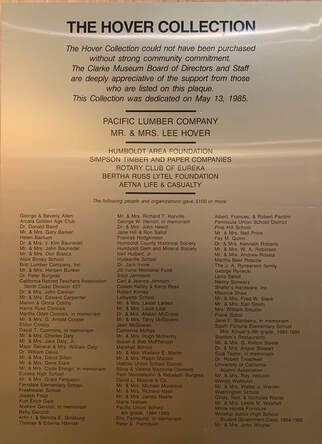The Hover Collection of Karuk BasketsThe Hover Collection is one of the most prized collections in the museum. It contains over 250 baskets, collected by Karuk women weavers and features a variety of baskets, most of which were woven as trade baskets. The collection has a long history of being used for educational purposes, from when it was initially displayed at the Firs Hotel in Orleans to its use at Grant Elementary by Elise Hover, a local school teacher, before it was donated to the Clarke Museum. Consisting of baskets collected by four generations of basket weavers since the late 1800s, it includes the works of famous basket weavers like Nettie Ruben and Elizabeth Hickox.
|
Now in the Hover Case...
Shounarr Gaplhouyit! Let’s Eat! And Tá Ávahiv! It's Time to Eat! are two exhibits in Nealis Hall that dive into the extensive history of Indigenous foodways. The Yurok, Karuk, Hupa, Wiyot, and Tolowa Tribes have lived in this region since time immemorial. That deep history with the landscape has resulted in countless uses for the natural resources throughout the Tribes. Salmon and acorns are critical food sources both for nutritional value and for cultural practices. Salmon and acorns are intimately related to spiritual practices and religious ceremonies. They are viewed as gifts from The Creator.
Beyond salmon and acorns, the Indigenous communities have found that many mushrooms, berries, and herbs make delicious meals, teas, or ciders. Elk and deer are hunted for their meat, which can be dried and stored for long periods. Smelt are caught along the coast and dried on the beach. Seaweed is harvested, washed with fresh water, and dried in round cakes to be used as a source of salt. Through centuries of living on this landscape, the Indigenous communities have found uses for nearly every plant and animal in the region.
Beyond salmon and acorns, the Indigenous communities have found that many mushrooms, berries, and herbs make delicious meals, teas, or ciders. Elk and deer are hunted for their meat, which can be dried and stored for long periods. Smelt are caught along the coast and dried on the beach. Seaweed is harvested, washed with fresh water, and dried in round cakes to be used as a source of salt. Through centuries of living on this landscape, the Indigenous communities have found uses for nearly every plant and animal in the region.



